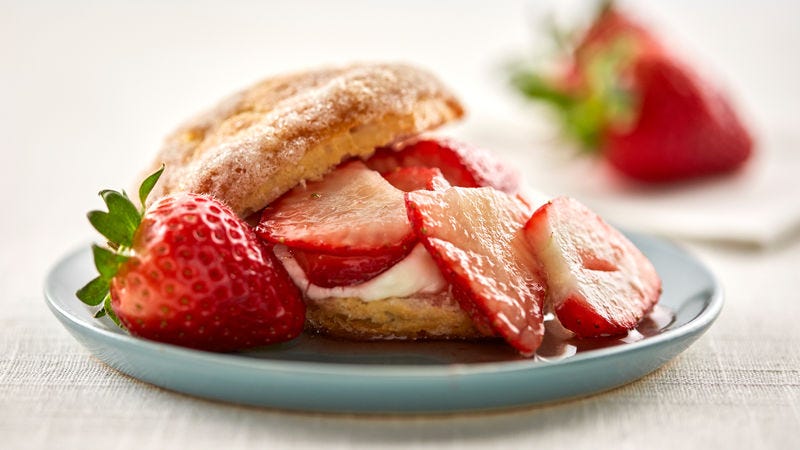|
|
{Image Attribution via Pillsbury}
Here’s another winner from our roster of “The Baking of Secret Family Recipes”.
Buongiorno amici:
This round of Secret family recipe offers one from Kane in Pennsylvania. The author is Virginia Manno, and we are grateful for her submission. A little history on the subject is always appropriate, and here we are.
The biscuit history follows that of sugar, and it seems that in Persia during the 7th Century BCE, people baked the first form of biscuits, resembling those of today. It wasn’t until the Moorish conquest of Spain and the crusades of the 12th and 13th centuries that Arabic cooking practices slowly entered Europe and eventually throughout the British Empire.
However, the modern biscuit is a French invention, and by the 14th century, it was possible to buy little fruit-filled wafers on the streets of Paris. These come from a corruption of the Latin bis cotum (baked twice) which became biscuit in English and biscotti in Italian. Traditionally, such biscuits are hard and dry in texture, and they know (and commonplace) from recipe books going back at least to the Elizabethan era.
In contrast, cookies are Dutch in origin. The name itself derives from the Dutch word ‘koekje’ (small or round cake), representing the small pieces of dough that Dutch bakers used to place in their ovens to test the temperature. However, the classic cookie, the ‘chocolate chip cookie’’, was only invented in 1937 by Ruth Graves Wakefield (1905-1977) of Whitman, Massachusetts, who ran the Toll House Restaurant. This type of cookie didn’t reach nationwide fame until 1939, when Betty Crocker popularized it in her radio show. Today, however, the chocolate chip cookie is the commonest baked and eaten cake in America. {1} Via Street Directory.
Ingredients for about 20 buns
Tree cups of biscuit mix
3/4 cup of cold water
1/3 cup of melted butter
3/4 cup of firmly-packed brown sugar
1/2 cup of strawberry jam
Procedures
Preheat the oven to 375F. Combine biscuit mix and water in a large bowl and mix well, beating hard for 20 strokes. Form dough into a ball on floured board and knead well 5 to 7 times. Roll or pat out dough into an 8-inch square and cut 16 biscuits with a 2-inch cookie cutter.
Combine the leftover pieces of dough and pat them into an 8 x 2-inch rectangle: cut four more biscuits. Dip each biscuit in butter, then dip in sugar, coating well—place in ungreased 13 x 9-inch pan. Sprinkle with any leftover butter and sugar. Press thumb in the center of each biscuit to the bottom and fill with one teaspoon of jam.
Bake for 18 to 22 minutes or until brown. Cool and serve with fresh strawberries and freshly whipped cream or sour cream if desired.
Thanks for reading. Eat safe! Ciao Chef W
Download Chef Walters E-Books
Please tune in to our latest Flavors + Knowledge Podcast
Subscribe to the Italian version SAPERE + SAPORI
Subscribe to News you can eat 24 Video-Cast on YouTube
Support Chef Walters Children’s Diabetes Foundation
For recipes, visit the chef blog.
Note: The views and opinions expressed in the Flavors and Knowledge newsletters are those of the authors and do not necessarily reflect Flavors and Knowledge’s official policy or position. Our blogger’s or authors’ content is of their opinion and not intended to malign any religion, ethnic group, club, organization, company, individual, or anyone. Any general advice posted on our blog, website, or app is only for informational purposes and, without any intentions, to replace any medical or other advice.


















